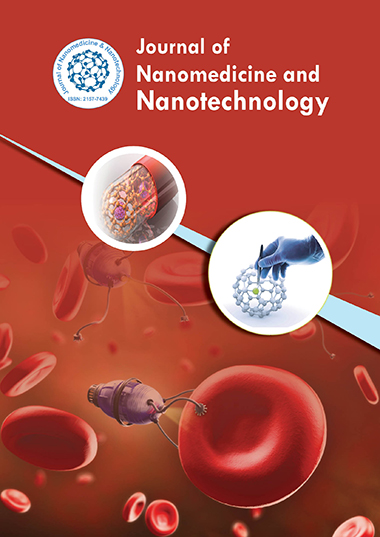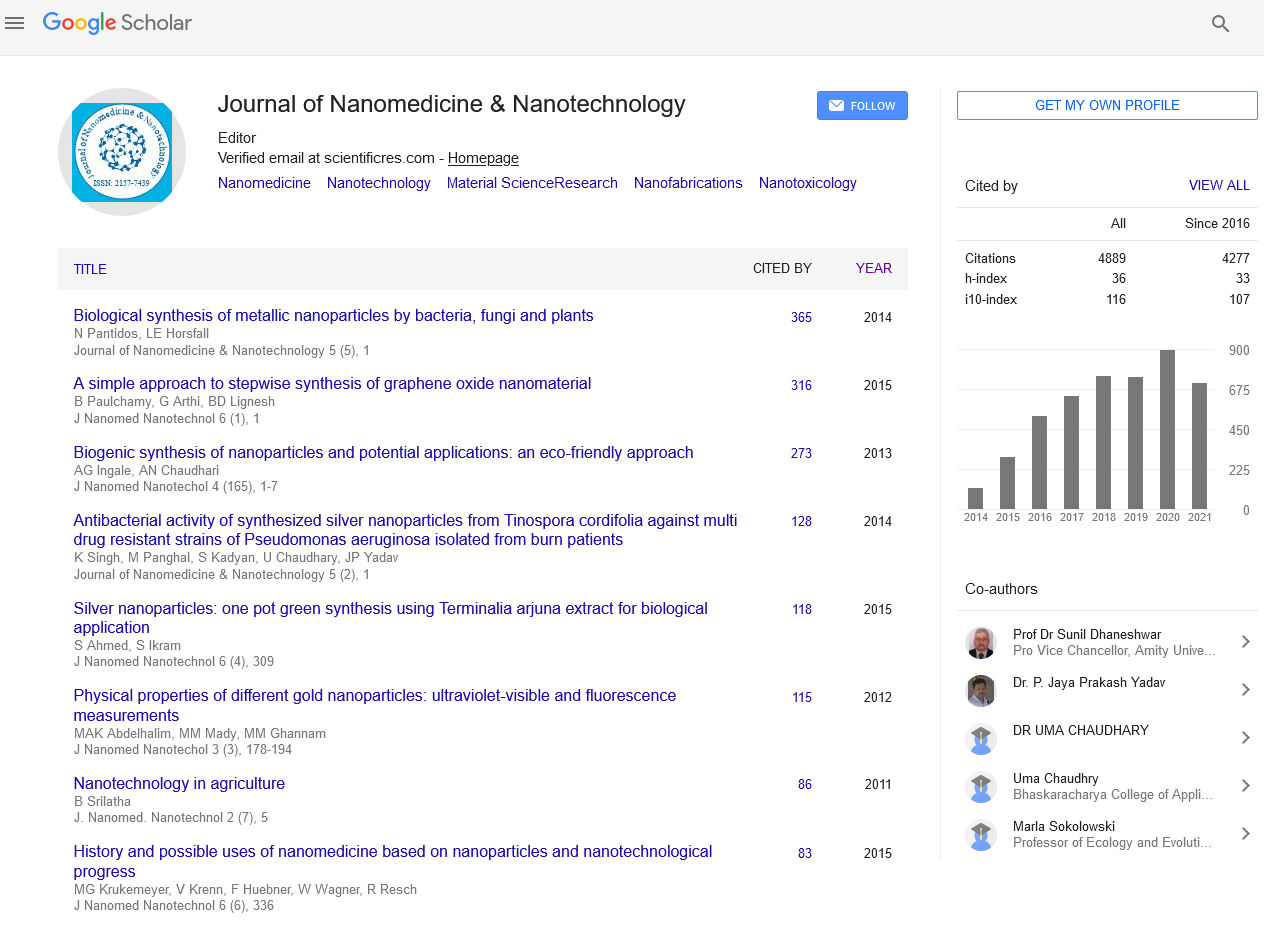Indexed In
- Open J Gate
- Genamics JournalSeek
- Academic Keys
- JournalTOCs
- ResearchBible
- China National Knowledge Infrastructure (CNKI)
- Scimago
- Ulrich's Periodicals Directory
- Electronic Journals Library
- RefSeek
- Hamdard University
- EBSCO A-Z
- OCLC- WorldCat
- SWB online catalog
- Virtual Library of Biology (vifabio)
- Publons
- MIAR
- Scientific Indexing Services (SIS)
- Euro Pub
- Google Scholar
Useful Links
Share This Page
Journal Flyer

Open Access Journals
- Agri and Aquaculture
- Biochemistry
- Bioinformatics & Systems Biology
- Business & Management
- Chemistry
- Clinical Sciences
- Engineering
- Food & Nutrition
- General Science
- Genetics & Molecular Biology
- Immunology & Microbiology
- Medical Sciences
- Neuroscience & Psychology
- Nursing & Health Care
- Pharmaceutical Sciences
Self-assembly of porphyrin and heteroacene organic nanostructures
2nd World Congress on Nanoscience and Nanotechnology
August 10-11, 2018 Osaka, Japan
Jonathan P Hill
National Institute for Materials Science, Japan
Scientific Tracks Abstracts: J Nanomed Nanotechnol
Abstract:
Supramolecular arrangement of porphyrins and other molecules has great potential in the fields of molecular information storage and sensing due to their ease of deposition and good chemical and thermal stabilities. In particular, porphyrins of relatively large molecular weights can be applied in thermal deposition while tetrapyrrole molecules have had an extensive synthetic chemistry developed which enables synthesis of complex derivatives. In this work, we present complementary examples of porphyrin nanoarchitectonics. Starting from simple symmetrical phenol derivatives, we describe the effects of steric hindrance about the respective hydroxyl groups and also the effects of conformational variation on the self-assembly structures. We also investigated fabrication of binary molecular monolayers using two different porphyrin molecules Tetrakis (3, 5-di-t-butyl-4-hydroxyphenyl) porphyrin and Tetrakis (4-pyridyl) porphyrin by deposition in ultrahigh vacuum. This leads to 2 unusual heteromolecular monolayer structures were observed with one exhibiting good separation of molecules within the monolayer. Meanwhile, a synthetic nanoarchitectonic approach was used to prepare self-assembled molecular nanowires at a mica substrate. The nanowires could be observed growing using Atomic Force Microscopy (AFM) and the network structures of the nanowires can be influenced by manipulation using the AFM probe tip. Formation of molecular monolayers with chromophores positioned remote from the substrate surface will also be discussed. Additionally, the synthesis and self-assembly at surfaces of novel heteroacenes will be described and the potential importance of these materials in several applications will be discussed. Recent Publications 1. Webre W A, Gobeze H B, Shao S, Karr P A, Ariga K, Hill J P, D???Souza F (2018) Fluoride-ion-binding promoted photoinduced charge separation in a self-assembled C60 alkylcation bound bis-crown ether-oxoporphyrinogen supramolecule. Chemical Communications. DOI: 10.1039/C7CC09524D. 2. Kong H, Yang S, Gao H, Timmer A, Hill J P, Díaz Arado O, Mo??nig H, Huang X, Tang Q, Ji Q, Liu W, Fuchs H (2017) Substrate-mediated C-C and C-H coupling after dehalogenation. Journal of American Chemical Society; 139: 3669-3675.
Biography :
Jonathan P Hill is Chief Scientist at the Supermolecules Group, National Institute for Materials Science, Japan. His main research interests are the synthesis and assembly of organic molecular and nanostructures for potential applications in molecular electronics, sensing and related fields. He is co-author of more than 350 published papers and 20 patents on these subjects. He is also an author of more than 300 invited and contributed presentations at international conferences and university seminars.
E-mail: jonathan.hill@nims.go.jp


